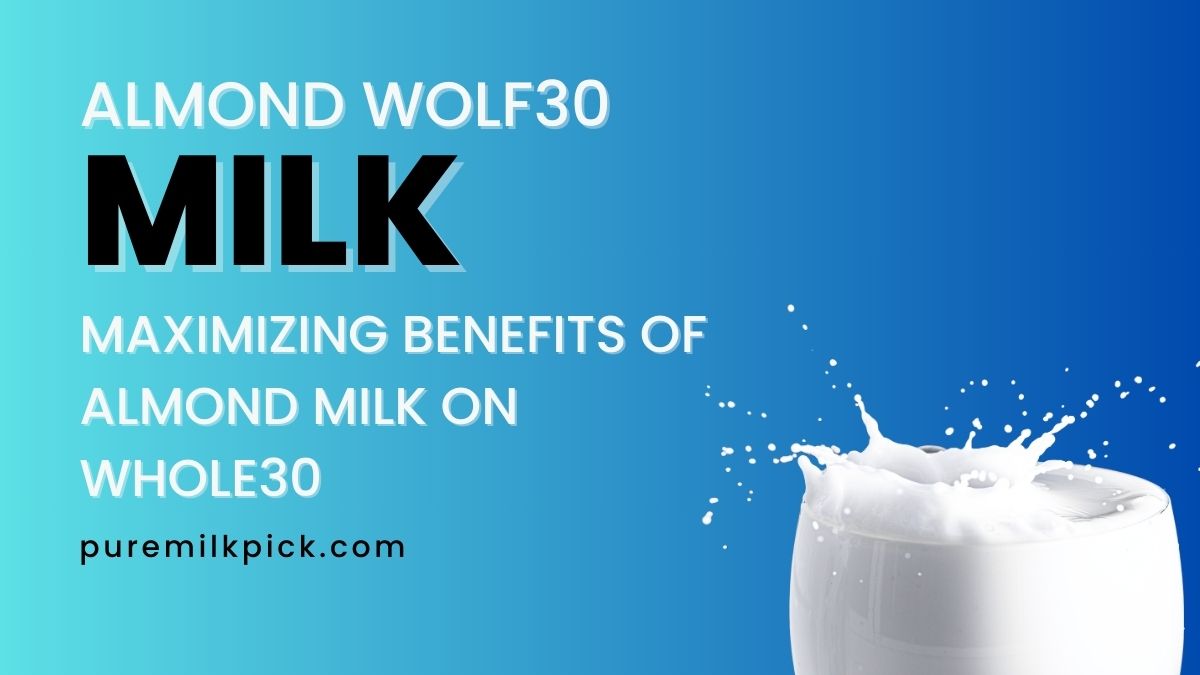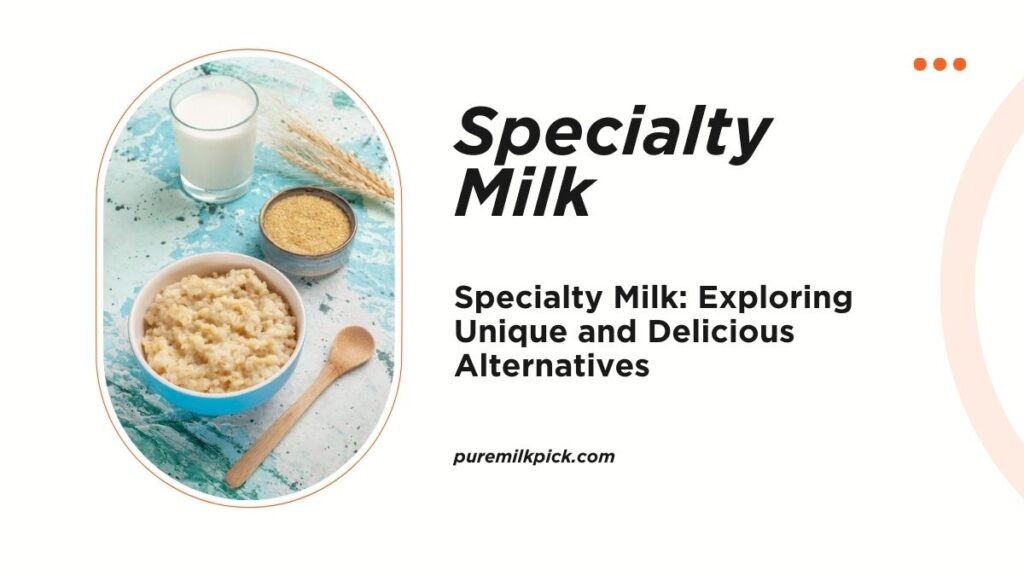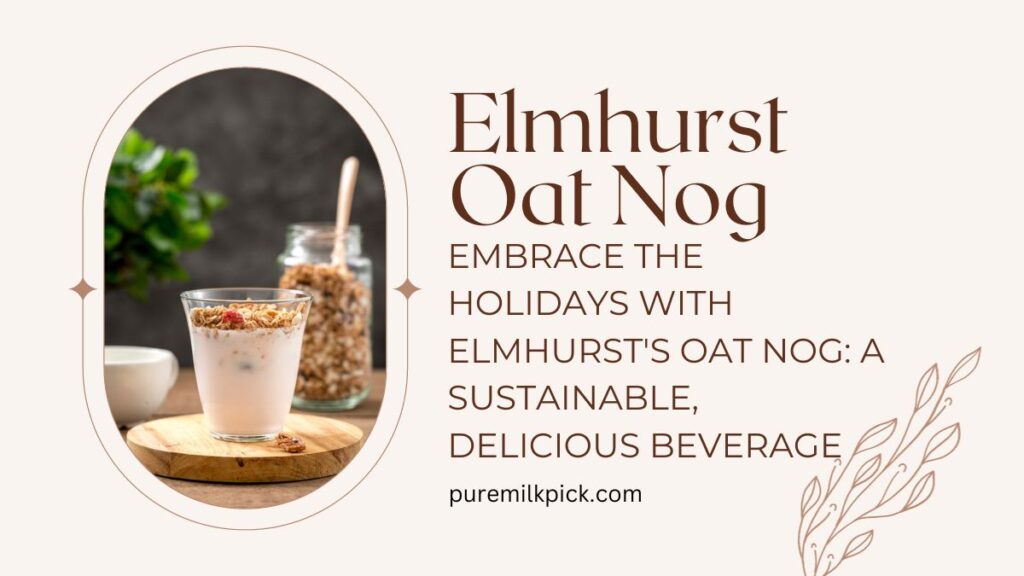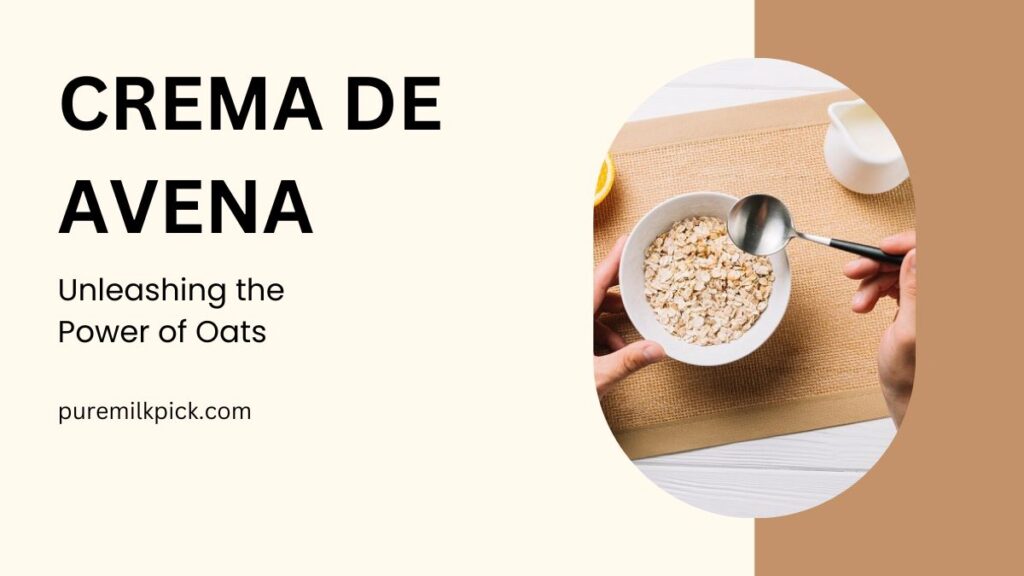Almond milk offers a dairy-free alternative that’s compliant with Whole30 requirements. It’s rich in essential nutrients like calcium and vitamin E, both vital for bone health and skin health, respectively. Additionally, it’s low in calories and carbohydrates, aligning with the Whole30 focus on eating whole foods and avoiding added sugars and processed items.
Integrating almond milk into your diet during your Whole30 journey can be seamless, thanks to its versatility. It can be used as a substitute for dairy milk in recipes, added to smoothies for a creamy texture, or enjoyed with compliant fruits for a quick and nutritious breakfast.
One popular Whole30-compliant recipe using almond milk is the Green Goddess Smoothie. The recipe calls for a handful of spinach, a ripe banana, a splash of almond milk, and chia seeds. Blend until smooth for a nutrition-packed, refreshing breakfast option. Another recipe to consider is the creamy almond milk chicken, a savory dish that pairs perfectly with mixed greens or cauliflower rice. It’s a testament to the versatility of almond milk in Whole30-compliant meals.
Understanding Whole30 and Almond Milk
Whole30 is a 30-day dietary program designed to reset your health and eating habits. It emphasizes consuming whole foods and eliminating potentially inflammatory food groups like sugar, dairy, grains, legumes, and alcohol. By focusing on unprocessed foods, the program aims to eliminate cravings, rebalance the digestive system, and promote overall health.
Criteria for compliant almond milk on Whole30
Choosing a compliant almond milk for your Whole30 program can be tricky. The key is to carefully read the ingredient list. Many commercially available almond milk contain additives like sugar, carrageenan, or other non-compliant ingredients. To adhere strictly to the program, opt for unsweetened almond milk with no added sugar or other Whole30 non-compliant additives.
Nutritional benefits of almond milk in a Whole30 diet
Almond milk is a great addition to a Whole30 diet due to its nutritional benefits. It is packed with calcium, which is crucial for bone health, and vitamin E, a powerful antioxidant that supports skin health. It’s also low in calories and carbohydrates, making it an excellent choice for those trying to maintain or lose weight. By incorporating almond milk into your Whole30 diet, you can enhance your nutrient intake while sticking to the program’s principles.
Read More: Embrace the Holidays with Elmhurst’s Oat Nog
Benefits of Almond Milk on Whole30
Low in Calories and Sugar Compared to Dairy Milk
Compared to its dairy counterparts, almond milk contains significantly fewer calories and sugars. A cup of unsweetened almond milk typically contains around 30 to 50 calories, compared to about 150 calories in whole milk. This makes it a valuable option for anyone following a Whole30 program who wants to manage their caloric intake.
Nutrient Content: Vitamins, Minerals, and Antioxidants
Almond milk is rich in vital nutrients such as calcium, vitamin E, vitamin D, and vitamin A. It also contains trace amounts of protein and healthy fats, as well as potent antioxidants. These nutrients contribute to the overall health benefits of almond milk, such as supporting bone health, enhancing skin health, and bolstering the immune system.
Lactose-free and Suitable for Those with Dairy Allergies or Intolerances
As a plant-based milk alternative, almond milk is naturally lactose-free, making it a suitable choice for people with lactose intolerance or those who follow a dairy-free diet. Moreover, it can be a safe choice for people with dairy allergies, although caution is advised for individuals with nut allergies.
Potential Role in Weight Management During Whole30
Almond milk, being low in calories and high in nutrients, can also play a crucial role in weight management during the Whole30 program. When used as a replacement for dairy milk in recipes or consumed as a part of a balanced diet, it can help participants keep their calorie intake in check while still satisfying their hunger. It’s a versatile ingredient that can be a part of any meal—breakfast, lunch, dinner, or even snacks—on the Whole30 plan.

Using Almond Milk in Whole30 Cooking and Baking
Substituting almond milk for dairy in Whole30-approved recipes
While dairy milk is typically a primary ingredient in various recipes, those following the Whole30 program often seek dairy-free alternatives. Almond milk presents itself as a brilliant substitute in Whole30-approved recipes due to its creamy texture and subtle flavor. It pairs well with both sweet and savory dishes, expanding your culinary horizons while sticking to the Whole30 guidelines.
Tips for incorporating almond milk in savory and sweet dishes
When incorporating almond milk into savory meals, it can be used to tenderize meats, in soups for added creaminess, or as a base in sauces. For example, you could use almond milk to create a creamy sauce in a Whole30-compliant mushroom stroganoff or use it as a base for a hearty butternut squash soup.
In sweet dishes, almond milk shines in smoothies, desserts, and baked goods. It can be blended with fruits for a naturally sweet smoothie or used as a liquid in dairy-free baking, such as Whole30-compliant banana muffins or almond meal pancakes.
How to choose the right almond milk for different culinary uses
Choosing the right almond milk for different culinary uses depends on the recipe. For most dishes, unsweetened almond milk is preferred to avoid adding extra sugar. However, in some sweet dishes, a touch of naturally sweetened almond milk can enhance the flavor. Always remember to check the ingredients list for Whole30 compliance, and when in doubt, opt for homemade almond milk where you control the ingredients.
Homemade Almond Milk Recipe for Whole30
A Step-by-Step Guide to Making Almond Milk at Home
Making your own almond milk at home for the Whole30 program can be a simple and cost-effective process. Here’s a quick step-by-step guide:
- Soak one cup of raw almonds overnight in water.
- The next day, drain and rinse the almonds and add them to a blender.
- Add four cups of water to the blender.
- Blend on high for 1-2 minutes, until the almonds are well ground and the water is milky.
- Strain the mixture using a nut milk bag or a cheesecloth over a large bowl.
- Press and squeeze with clean hands to extract as much milk as possible.
- You can store the milk in a sealed container in the refrigerator for up to 5 days.
Importance of Using Unsweetened and Unflavored Almonds during Whole30
During the Whole30 program, it’s essential to use unsweetened and unflavored raw almonds to make almond milk. This ensures that you’re not inadvertently consuming any non-compliant additives or sugars. Read labels carefully when purchasing almonds to ensure they are neither salted nor roasted, as these can also contain non-compliant ingredients.
Tips for Storing Homemade Almond Milk
Homemade almond milk can be kept in a sealed container in the refrigerator for up to 5 days. Shake well before using, as separation is natural. For a longer shelf life, you can also freeze almond milk in ice cube trays and use it as needed. Just remember that the texture may change slightly upon thawing, making it best suited for cooking and baking applications when frozen.

Almond Milk-Based Whole30 Recipes
Almond Milk Smoothie Bowls
Almond milk smoothie bowls make a nutrient-rich and satisfying breakfast on the Whole30 program. The base is a thick smoothie made by blending fruits like bananas and berries with unsweetened almond milk. The bowl is then topped with a variety of Whole30-compliant ingredients such as nuts, seeds, and fresh fruits for added texture and flavor.
Almond Milk Chia Pudding
Chia pudding with almond milk is a simple, yet delicious breakfast or snack option during the Whole30 program. To make this, combine chia seeds with unsweetened almond milk and let it sit overnight. The chia seeds absorb the almond milk, creating a pudding-like consistency. Top it with fresh fruits, nuts, or a sprinkle of cinnamon for a satisfying and healthy meal. This dish not only leverages the nutritional benefits of almond milk but also the fiber and omega-3 fatty acids in chia seeds.
Lunch and Dinner Recipes:
Creamy Almond Milk-Based Soups
Almond milk can bring a creamy texture to Whole30-approved soups without the need for dairy products. For instance, consider a creamy tomato soup. Start by sautéing onions, garlic, and tomatoes in a pot, then add herbs, spices, and vegetable broth. Once the mixture is well cooked, blend it until smooth. Finally, stir in almond milk to achieve a rich, creamy texture. Another option could be a creamy broccoli soup, where almond milk is incorporated after pureeing cooked broccoli and onions.
Almond Milk-Based Sauces for Whole30-Approved Pasta Alternatives
Almond milk can also serve as a base for creamy pasta sauces. These sauces pair well with Whole30-approved pasta alternatives like zucchini noodles (zoodles) or spaghetti squash. To create an almond milk-based Alfredo sauce, simply sauté garlic in a pan, add almond milk, and cook until it thickens slightly. You can enhance the flavor with nutritional yeast, which gives a cheesy flavor without the dairy. This sauce can be tossed with your pasta alternative, and topped with grilled chicken or roasted vegetables for a wholesome meal.
Dessert Options
One of the greatest challenges of the Whole30 program is finding compliant dessert options. However, with almond milk as your secret ingredient, you can enjoy a range of delightful, guilt-free treats.
Almond Milk-Based Ice Cream or Popsicles
Almond milk can be used to make creamy, dairy-free ice cream or popsicles that are Whole30-compliant. For a basic almond milk ice cream, blend frozen bananas with unsweetened almond milk until it reaches a creamy consistency. For a richer flavor, add compliant ingredients like cocoa powder or vanilla extract. Make sure to freeze the mixture thoroughly before serving. Similarly, you can create an array of popsicle flavors using fruits, nuts, and almond milk. Pour your mixture into a popsicle mold and freeze until solid. These icy treats are refreshing and perfect for a hot summer day.
Whole30-Compliant Almond Milk Hot Cocoa
Hot cocoa is a comforting beverage that can be enjoyed even on the Whole30 program, thanks to almond milk. To make this, heat unsweetened almond milk on the stove and whisk in cocoa powder until it dissolves completely. Add a touch of cinnamon or vanilla extract for extra flavor. Serve it warm for a cozy, comforting, and Whole30-compliant treat. Remember, all ingredients should comply with the Whole30 guidelines, and making your own almond milk is always preferable to ensure it contains no non-compliant additives.
Tips for Incorporating Almond Milk into Whole30 Lifestyle
Using Almond Milk as a Coffee Creamer or in Teas
Almond milk’s creamy texture makes it a popular substitute for traditional milk or cream in hot beverages like coffee and tea. While on a Whole30 regimen, you can use unsweetened almond milk to add a creamy element and mild nutty flavor to your morning coffee or tea without violating the program’s guidelines.
Finding and Selecting Whole30-Compliant Store-Bought Almond Milk
While homemade almond milk is the best option for ensuring Whole30 compliance, there are times when convenience might lead you to choose store-bought versions. In these instances, it’s crucial to carefully read the labels. Look for almond milk with minimal ingredients, preferably just almonds and water. Avoid any that include added sugars, sweeteners, or non-compliant preservatives.
Managing Portion Sizes and Moderation with Almond Milk on Whole30
Although almond milk is Whole30-compliant, it’s important to consume it in moderation. While it’s a great dairy substitute, it can be high in calories if consumed in large amounts. Additionally, relying too heavily on almond milk can detract from the consumption of other nutrient-rich foods. Keep portion sizes in check and aim to incorporate a balanced variety of other Whole30-approved foods into your daily meals.

Potential Pitfalls and Considerations
While almond milk offers a variety of benefits and culinary opportunities for those following the Whole30 diet, there are a few potential pitfalls and considerations to be aware of.
Hidden Additives in Store-Bought Almond Milk
Despite the apparent convenience, store-bought almond milk can contain hidden additives and preservatives that are not Whole30-compliant. For example, certain brands may add sweeteners, emulsifiers, or thickening agents to enhance the texture and shelf life. These non-compliant additives can compromise your Whole30 journey. Therefore, always thoroughly check the ingredient list before purchasing.
Nutritional Differences Between Homemade and Store-Bought Almond Milk
The nutritional content of almond milk can vary greatly depending on whether it is homemade or store-bought. Homemade almond milk tends to have a higher nutrient density as it’s typically made from whole almonds, whereas store-bought versions often contain a smaller proportion of almonds and might be watered down. Hence, for optimal nutritional benefits, it’s recommended to make your own almond milk whenever possible.
Ensuring Almond Milk Fits Within The Broader Whole30 Dietary Guidelines
While almond milk is a versatile ingredient that can enhance the flavor and texture of various dishes, it’s essential to remember that Whole30 promotes a balanced diet. This means that almond milk should not be used as a crutch or substitute for other important food groups. Instead, it should be used as one component of a diverse diet that includes a wide range of fruits, vegetables, lean proteins, and healthy fats. Consequently, while almond milk can be a great tool in your Whole30 arsenal, it should not be the sole focus of your dietary intake.
Conclusion
Almond milk indeed plays a significant role in the Whole30 diet, serving as a valuable dietary tool. Not only does it introduce a creamy, dairy-free element into your meals, but it also allows for greater culinary creativity, permitting you to explore a wide range of flavors and textures in your Whole30 journey.
Almond milk’s versatility makes it an excellent addition to everything from hearty main dishes to delightful desserts. It’s a fantastic ingredient for creating creamy sauces, refreshing popsicles, and comforting hot cocoa, all in compliance with the Whole30 guidelines.
Moreover, almond milk’s usefulness extends beyond just cooking. It’s also a splendid substitute for traditional milk or cream in hot beverages, letting you enjoy your morning coffee or tea without straying from the Whole30 path.
However, as with all foods, it’s important to consume almond milk in moderation and balance it with a variety of other nutrient-rich Whole30-approved foods. Be vigilant about potential pitfalls like hidden additives in store-bought versions and nutritional differences between homemade and store-bought almond milk.
In conclusion, almond milk can be a great ally on your Whole30 journey, providing you with many dietary options while helping you adhere to the program’s guidelines. Embrace the opportunities it offers, experiment with it in your recipes, and enjoy the flavors it brings to your meals. With almond milk in your Whole30 arsenal, you’re well-equipped for success on this rewarding dietary journey.
Frequently Asked Questions
Yes, you can use almond milk daily while on the Whole30 program. However, it’s important to remember that moderation is key. Despite its Whole30 compliance, almond milk can be high in calories when consumed in large amounts and should not replace other key nutrients in your diet.
Not all store-bought almond milk are Whole30 compliant. Many contain added sugars, sweeteners, or non-compliant preservatives. Always read the labels carefully and choose versions that contain minimal ingredients, preferably just almonds and water.
While it’s not a requirement, homemade almond milk is often recommended for those following the Whole30 program. Homemade versions typically have a higher nutrient density as they’re made from whole almonds, while store-bought almond milk might be watered down and contain fewer almonds. Hence, for optimal nutritional benefits, it’s suggested to make your own almond milk when possible.



